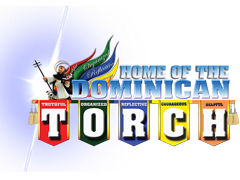
Latest Stories
September 2024

September 2024

“The Lord God took the man and put him in the garden of Eden to work it and keep it.”
Genesis 2:15





For more pictures, please click here.
The Religious Department headed by Mr. John Erick Moje in collaboration with the D’TORCH House Committee organized a coastal cleanup for the Middle School students of DIS. The House Committee Coordinator Ms. Archie Racadio said this is timely for the Middle School students to increase their environmental awareness. With Student Activity Coordinator Dr. Agosh Librea, they conducted an ocular inspection of the coastal waters of Shimen District, New Taipei City. The Coastal Cleanup occurred at Baisha Bay (Baishawan) in Shimen District, New Taipei City last September 27, 2024.
Baisha Bay (Baishawan) – which translates as “White Sand Bay” – is one of the better-known beaches along the coast. The bay is between Linshanbi to the south and Fugui Cape to the north. These rocky promontories result from the volcanic activity from the Datun Range that sent lava flowing directly into the sea some 800,000 years ago. The different minerals present in the rock have created a mottled rock surface. Fish traps can be seen along the coast between Baisha Bay (Baishawan) and Fugui Cape. Baisha Bay and Heping Island Park have received the "Svayam Accessibility Awards 2018" under the Category "Most Accessible Tourist Attraction Site" for the initiatives towards "North Coast Accessibility Route" and "Building a Barrier-Free and Accessible Environment at the Keelung Heping Island Park" on Nov. 2018.
The coastal cleanup is intended to reduce marine pollution and decrease the number of harmful materials such as plastics, which pose risks to life and ecosystems; enhance awareness and participation: in the impacts of pollution on marine environments, encourage sustainable practices and foster a sense of responsibility towards coastal conservation; improve coastal ecosystem health, supporting biodiversity and promoting the recovery of affected wildlife and plant species.
The schedule of activities is as follows:
The participants were told to bring writing materials for reflection writing, drinking water, sunscreen protection, sunglasses, and a sun hat. They wore their house shirt and blue jeans during the event. Important coastal guidelines were presented to the students before cleanup for strict compliance and observation.
Joining them were, Academics Coordinator Mr. Joe Schoeman, Professional and Development Coordinator Ms. Janice Doyle, LS Activity Coordinator Mr. Jake Springer, School Nurse Ms. Betty Hung, and Campus Ministry member Mr. Erick Gonzales. The MS homeroom teachers: Ms. Bing Racadio, Mr. Patrick Johnson, Mr. Joseph Amoguis, and Mr. Elliott Wakeling joined them as well.
The whole group was able to collect 58 kilograms of garbage items. Garbage items collected were cigarette butts, food wrappers, plastic beverages, plastic caps, plastic grocery bags, straws, stirrers, foam take-out/away containers, plastic lids, and other plastic bags. They were not expecting a huge amount of garbage collected.
The activity did not stop after the coastal cleanup, instead, the participants gathered in the DIS gymnasium by HOUSE groups for poster-making and group sharing. Mr. John Erick, Dr. Agosh, and Ms. Archie facilitated the group dynamics.
Plastic pollution is a massive problem for our oceans, but even small actions can make a big difference. Every bottle, every straw, and every piece of trash you clean up can lead to a cleaner, healthier ocean. Let us help to clean up local beaches, streams, parks, or neighborhoods. When we clean up our homes, all living in the sea can see the change.